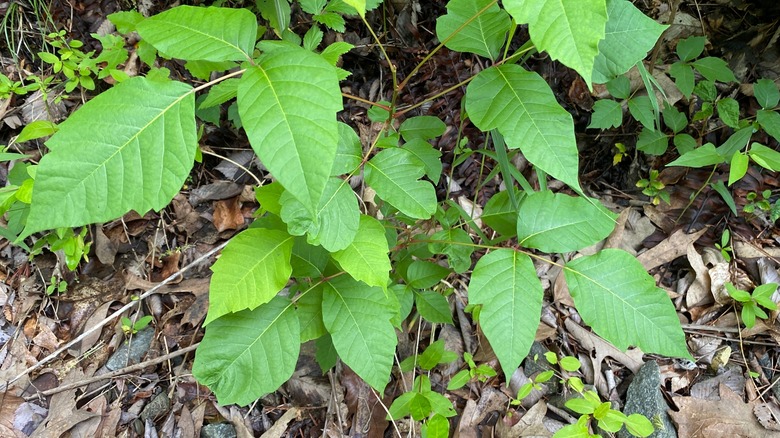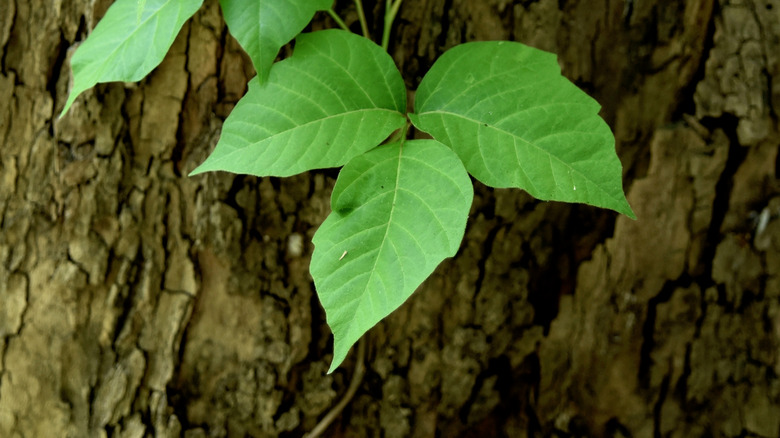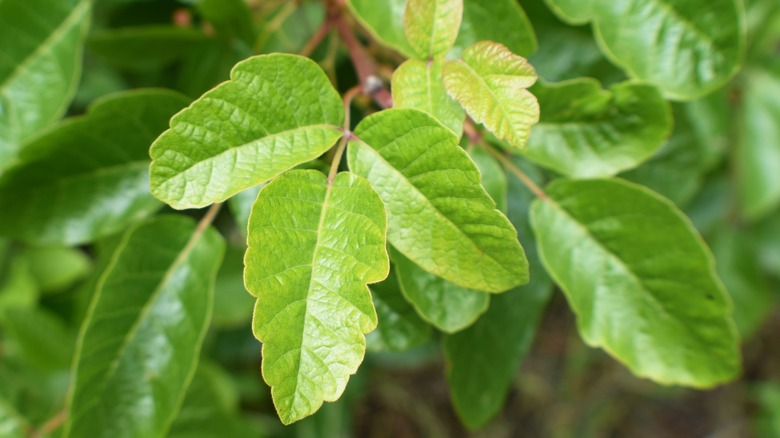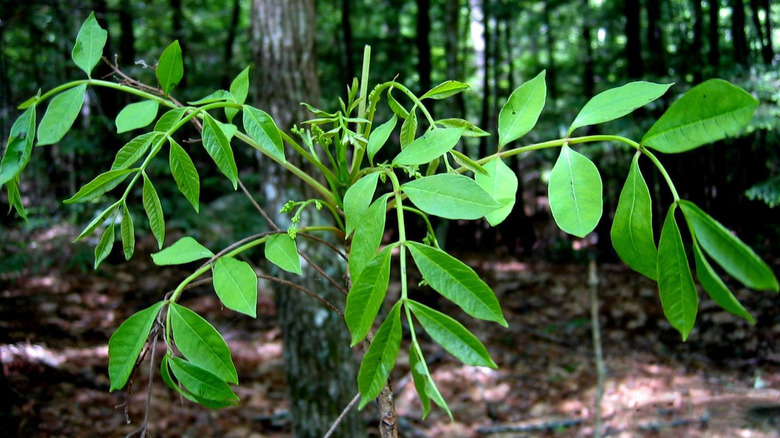How To Tell The Difference Between Poison Ivy, Poison Oak And Poison Sumac
For some, it's one of the great impediments to enjoying the great outdoors: the fear that, while strolling down a wooded trail, a patch of bare skin will come in contact with something green, leafy, and determined to cover you in miserably itchy welts. Is that bush overtaking the path a harmless shrub or a dangerous poison oak? Is that vine snaking up the side of the house going to be a pleasant decoration or a hazardous patch of poison ivy? Who knows what evil lurks in the chlorophyll of fauna?
In truth, some people aren't even susceptible to the urushiol oil secreted by poison ivy, oak, and sumac, and many who are don't suffer more than a few weeks of irritated skin that can be treated with home remedies or over-the-counter medications (per the University of Florida Institute of Food and Agricultural Studies). But even minor exposure can be unpleasant, and contact with these plants can result in serious infections. It's best to avoid contact altogether.
"Leaves of three, let it be" is a popular warning about plants, but it isn't a foolproof guide to spotting poisonous ones (per the CDC). There are other ways that even the most indoorsy of us can spot ivy, oak, and sumac, and learn how to tell them apart from one another.
Poison ivy
Of the three urushiol offenders, poison ivy is the most widespread. According to the U.S. Forest Service, 15 different species of the plant can be found throughout East Asia and the Americas, generally at lower elevations. Most varieties grow as vines, but Western poison ivy grows as a shrub. Its irritating effects on humans aren't shared by many other species in the animal kingdom, making it a handy food source, and there are stories of settlers and Native peoples eating poison ivy to develop immunity. Unfortunately, not only does that not work, but repeated exposure to poison ivy or any urushiol-producing plant increases the odds of a reaction (per Healthline).
The look of poison ivy varies depending on the species, but all have tear-shaped leaves that come to three leaflets according to the University of Florida. Vine species will have hair on the vine itself. Poison ivy leaves are often shiny and turn red or purple in autumn. Their flowers can be green or yellow, and their berries are pale and waxy. The worst part of the plant to come into contact with is its sap; urushiol is at its highest concentration there. But every part of poison ivy excretes the oil.
Poison oak
Like poison ivy, poison oak comes in multiple species, though it has a more limited range. The CDC has mapped Pacific poison oak along the Pacific Northwest, while Atlantic poison oak grows in the southeast of North America. The two varieties can grow in different ways, just like poison ivy, with Atlantic poison oak growing as a shrub and Pacific poison oak growing as a vine. Neither does well with too much shade or moisture.
Despite its name, poison oak is not a member of the oak family (per Britannica). But they do mimic characteristics of the white oak tree, and that can help distinguish poison oak from poison ivy. Both have leaves that typically come to three leaflets, both have yellow or green flowers, and both have pale berries. But poison oak leaves, like a true oak's, are usually lobed around their edges. They're also hairy and come in a wide variety of colors. But should you come into contact with poison oak, the result would be the same as if you touched poison ivy; the minor differences in appearance don't affect what the urushiol does to the skin (per the Cleveland Clinic).
Poison sumac
In a line-up of offending urushiol plants, poison sumac would likely be the easiest to pick out if you knew what to look for. Native to the eastern part of North America, it does best in moist woods. While poison ivy and poison oak can grow as a shrub or a vine depending on the species, poison sumac grows as a small tree or shrub. Its leaves are smooth and come to a fine point, and they typically grow in groups of around seven to 13 leaves per stem. Its flowers and berries are similar to those of poison ivy and poison oak, though the berries of poison sumac tend to hang from stems further out from the main body of the plant.
Another feature setting poison sumac apart is its toxicity. According to the University of Florida, it's more allergenic than the other urushiol-producing plants, and Ohio Health reports it has a reputation for being one of the most toxic plants in the United States. But poison sumac's limited range makes it much less common than poison ivy or oak, and the rash it causes usually isn't materially different from its counterparts.



